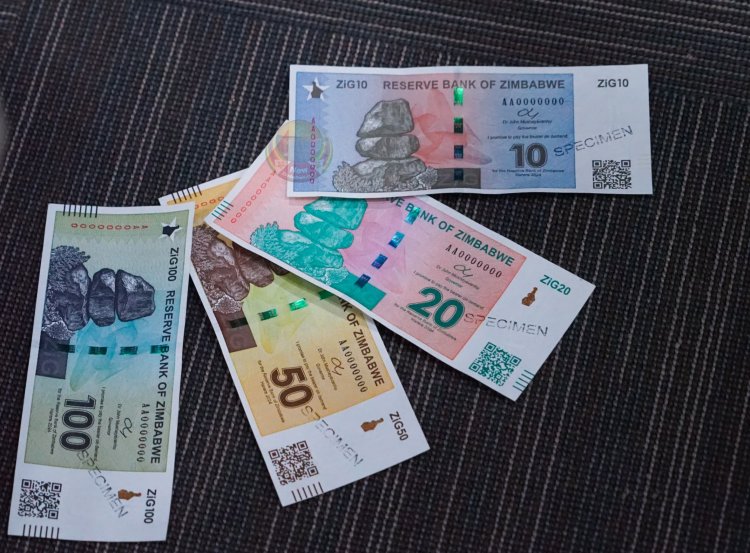Zimbabwe Launches Gold-backed Currency

Zimbabwe's central bank launched a new "structured currency" backed by gold, as it seeks to tackle sky-high inflation and stabilize the country's long-floundering economy.
The ZiG -- short for Zimbabwe Gold -- will replace the Zimbabwean dollar which has tumbled in value over the past year, pushing inflation through the roof, Reserve Bank governor John Mushayavanhu said.
"With effect from today, banks shall convert the current Zimbabwe dollar balances into the new currency," he said, presenting a monetary policy statement.
The ZiG will be "fully anchored and fully backed" by a basket of reserves comprising foreign currency and precious metals -- mainly gold, he added.
The move is aimed at fostering "simplicity, certainty, and predictability" in Zimbabwe's financial affairs, he added, presenting the new banknotes that come in eight denominations ranging from 1 to 200 ZiG.
The Zimbabwean dollar has lost almost 100 percent of its value against the US greenback over the past year.
It was officially trading at around 30,000 against its more coveted US counterpart -- and at 40,000 on the black market, according to tracker Zim Price Check.
Its poor performance contributed to the southern African country's high inflation rate, which after climbing well into the triple digits last year, was at 55 percent in March, according to official data.
This has piled pressure on its 16 million people who are already contending with widespread poverty, high unemployment and a severe drought induced by the El Nino weather pattern.
Zimbabweans have 21 days to convert their old cash into new money, Mushayavanhu said.
The new banknotes feature a drawing of gold ingots being minted as well as Zimbabwe's famous Balancing Rocks, which already appeared on the old ones.
Zimbabwe boasts vast gold deposits, with the precious metal accounting for almost 25 percent of all exports in January, according to official data.















